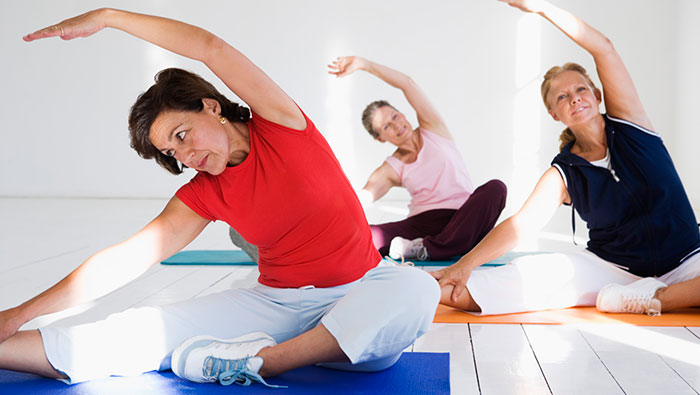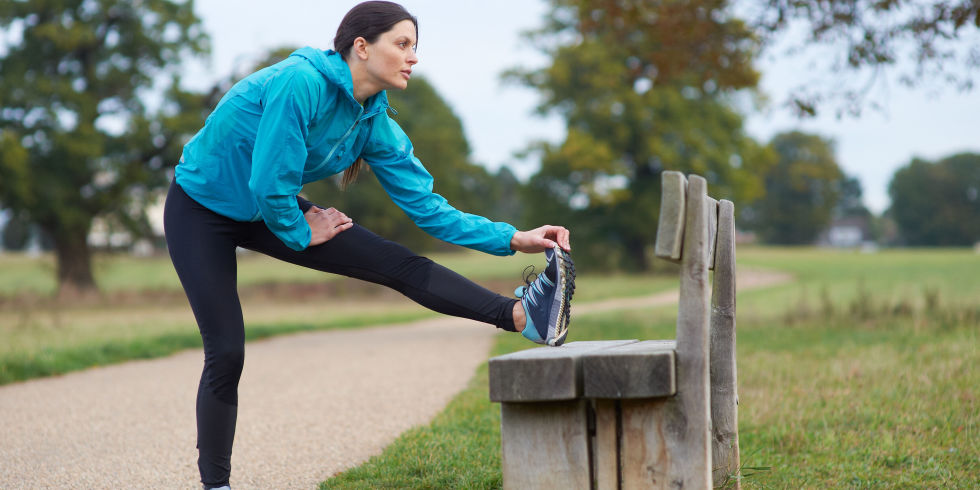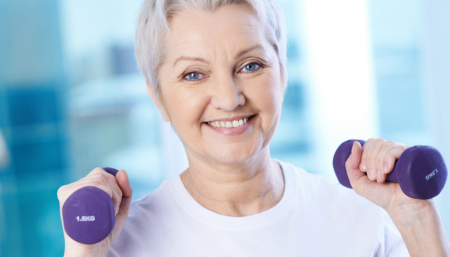Although discomfort during exercise is a principal reason that patients with heart failure seek medical care, exercise training is safe and can benefit these patients, according to the American Heart Association.

Exercise plays an important role in both the prevention and rehabilitation of many forms of heart disease. Exercise can have a positive influence on many of the factors that increase the risk for heart disease such as high blood pressure, high cholesterol, diabetes and obesity.
Coronary artery disease is the most common form of cardiovascular disease. Others include hypertension, stroke and congestive heart failure. Coronary artery disease is almost always the result of a process referred to as atherosclerosis, the formation of blockages that gradually cause the arteries that supply blood to the heart to narrow. The blockages consist primarily of fatty substances, cholesterol and calcium.
If the blood flow is unable to meet the needs of the heart, people generally feel chest pressure or a dull ache, sometimes radiating up into the neck, jaw, left shoulder or arm. This type of pain is referred to as angina. Clots may form and completely close the vessel, resulting in a heart attack.

General exercise guidelines
Individuals recently diagnosed with coronary artery disease are often referred to a cardiac rehabilitation program. Many people can safely start an exercise program at home on their own. Your physician will be able to advise you as to what type of program is best for you based on your medical history and present physical condition.
- If you recently had a heart attack or heart surgery, you must get medical clearance and guidelines from a physician before increasing your activity level.
- Monitor your exercise intensity closely. Make sure to stay within your individual heart-rate zone (usually determined by a physician from a treadmill test). Your exercise heart rate should be 10 or more beats per minute below the level that triggers abnormal signs or symptoms. (Count your pulse for 10 seconds and multiply by six to get your heart rate in beats per minute.) Your doctor should recommend an exercise heart rate that is considered safe and appropriate for you. This may involve taking an exercise stress test to determine your peak heart rate.
- Try to exercise at least three to four times per week. Individuals with low fitness levels may still benefit from five to 10 minutes of exercise, two to three times per day. Perform a gradual warm-up and cool-down of at least 10 minutes. Total exercise duration should be gradually increased to 30 to 60 minutes over a period of one to six months. In addition to a specific exercise program, you can help your heart further by increasing your activity in daily life. For example, ride a stationary bicycle while watching TV or reading the newspaper. Take up gardening, switch to a manual lawn mower, or walk or bike on short errands. Maybe you could park a mile from work and walk, park your car at the farthest end of parking lots, take the stairs instead of the elevator, and walk the dog more often. Use your imagination!
- Inform your physician if you have any abnormal signs or symptoms before, during or after exercise. This includes chest pain, labored breathing or extreme fatigue.
- If prescribed, always carry your nitroglycerin with you, especially during exercise.
- Stay hydrated: It is important to drink water even before you feel thirsty, especially on hot days.
- Don’t exercise outdoors when it is too cold, hot, or humid. High humidity may cause you to tire more quickly; extreme temperatures can interfere with circulation, make breathing difficult, and cause chest pain. Better choices are indoor activities such as mall walking.
- Never exercise to the point of chest pain or angina. If you develop chest pain during exercise, stop immediately and contact your doctor.
It’s never too late to increase your physical activity or start an exercise program. Get an okay and some guidelines from your physician before you start.
And remember, always keep your exercise comfortable. If it’s causing discomfort, slow down, you are pushing too hard.
Strength Exercise
It may help heart patients to include strength training in their physical conditioning program. In addition to increasing your muscle fitness and well-being, strength training can reduce the heart-rate and blood-pressure responses to upper-body work such as lifting. Thus, resistance training can decrease the demands on your heart during work and leisure-time activities.
Heavy loads, can place undue stress on the heart, so use light loads that permit a lot of repetitions (ideally do 10 to 15) per set. Strength training should work all the major muscle groups in your body. Single-set programs done two to three times a week are recommended over multiple-set programs because they are highly effective and less time-consuming.
Cardiac Warning Signs
You need to stop exercising immediately and consult a doctor if you have:
- Pain or pressure anywhere from you neck to your navel,
- Dizziness,
- An abnormal heart rhythm,
- Unusual shortness of breath, or
- Nausea.

Tips to reduce heart problems:
In addition to exercising, heart patients can take several steps to reduce the risk of further heart problems:
Choose low-fat, low-cholesterol, low-calorie, and nonfat food items, and eat plenty of grains, fruits, and vegetables. Aim for a low-density lipoprotein (LDL) cholesterol (“bad” cholesterol) level under 100 milligrams per deciliter.
- Quit smoking.
- Take the medications your doctor has prescribed.
- Learn to respond calmly to stressful situations. Develop stress-reducing techniques like deep breathing ormeditation.
- Lower your blood pressure if it is high (140/90 or higher). This typically involves diet, exercise, and sometimes medication.
- Get regular checkups.
- Consider joining a cardiac rehabilitation program, which provides guided exercise and social support.
Remember: This information is not intended as a substitute for medical treatment. Before starting an exercise program, consult a physician.
Disclaimer
The Content is not intended to be a substitute for professional medical advice, diagnosis, or treatment. Always seek the advice of your physician or other qualified health provider with any questions you may have regarding a medical condition.



